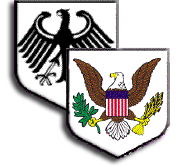Articles and Reviews
Clara Harsh, "Book Reviews," The Palatine Immigrant 36:2(2011): 3-4.
BOOK REVIEWS
Palatines to America members are fortunate that Don Heinrich Tolzmann is interested in German immigrants to United States and translates books that add to the resources available to them. In this issue there are two recent publications that are now available in English. Both were donated by the publisher.
The Cincinnati Germans in the Civil War, By Gustav Tafel.
Originally published in 1901. Translated and edited with Supplements on Germans from Ohio, Kentucky, and Indiana in the Civil War (2010) by Don Heinrich Tolzmann. 198 pp. Illus. Notes. Index. Paper. ISBN 9781932250862.
Little Miami Publishing Co. PO Box 588, Milford, OH 45150.
Gustav Tafel was born in Germany in 1830 and came to United States at the age of 17. He settled in Cincinnati, first working in the press at the Cincinnati Gazette. By 1855 he was a reporter for the Cincinnati Volksblatt, studying law in his spare time. After he passed the Bar in 1858, he devoted his time to practicing law. When President Lincoln issued his call to arms for the defense of the Union, Tafel was one of the first to volunteer. He served ably until the end of the war when he returned to Cincinnati to his law practice.
Tafel was active in the Cincinnati Turnverein and the community. He served as mayor and contributed much to his community. He was instrumental in the founding of the German Altenheim, a home for the elderly of German descent.
Gustav Tafel was proud of the participation of the Cincinnati Germans in the Civil War which provided the incentive for him to write his book. Tolzmann found additional units not mentioned by Tafel while translating this book. These have been added as additional chapters. Tolzmann’s explanatory notes are, as always, a welcome addition to the translation.
The 9th Regiment of the Ohio Volunteer Infantry (OVI,) the first German Regiment, was formed in less than a week after the call to arms by President Lincoln. The Turner Hall, Arbeiterhalle, and Löwengarten all accepted recruits, and the ten companies were formed. They chose as their colonel Robert McCook and August Willich was adjutant. McCook was alleged to have said he was pleased to have a German Regiment because, "I know the Germans will fight! Our American boys of course mean well enough but they don’t know how."
Numerous regiments are mentioned, some in more detail than others. Cincinnati residents will find a tour of Spring Grove Cemetery of value for there are numerous monuments to these soldiers there. The memorabilia of the Turnverein includes much information about the soldiers, including group photographs. Some are reproduced in the current book.
Tolzmann has provided biographies of a number of German soldiers and included pictures of many of them. One man that most people do not know is German is George A. Custer, whose name was changed from Kuester by his immigrant grandfather. The book lists historic sites, museums and memorial halls that many will find useful. It is a comprehensive collection of the men from southwestern Ohio who participated as soldiers in the American Civil War.
The German Element in the Ohio Valley: Ohio, Kentucky & Indiana, By Gustav Koerner.
Originally published in 1880. Translated and edited 2011 by Don Heinrich Tolzmann. 142 pp. Indexed. Paper. ISBN9780806355078. Clearfield CO, 3600 Clipper Mill Rd., Suite 260, Baltimore, MD 21211-1953.
This book is another portion of Koerner’s Das deutsche Element in den Vereinigten Staaten von Nordamerika, 1818-48, one segment reviewed in the previous Palatine Immigrant. The author’s aim was to present a study of the history of the German element in America and show to what extent these German-Americans had influenced American society.
In examining this influence, the people studied were leaders of the German communities such as newspaper editors and publishers, e.g. Karl Gustav Rümelin, who was instrumental in founding the Volksblatt. The editor of this Democratic paper was Heinrich Rödter, and the paper struggled to survive. It was influential in leading the German vote to the Democrats, but turned Republican in 1856. This was the period when many Germans joined the Republican Party, primarily on the issue of slavery.
Many other German-Americans are noted in Koerner’s book. In addition to publishers and editors there were lawyers, politicians, soldiers, educators, religious leaders and pastors, physicians and scientists. Reading about the German element emphasizes just how far-reaching and important these men were in bringing about the development of the patterns of life in these states in the early 19th century.
Clara Harsh
Book Review Editor
The Palatine Immigrant
